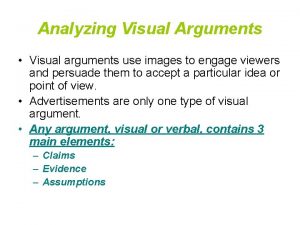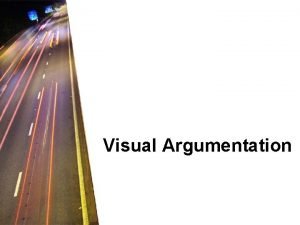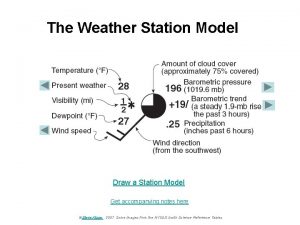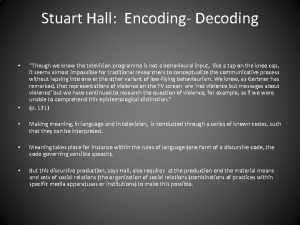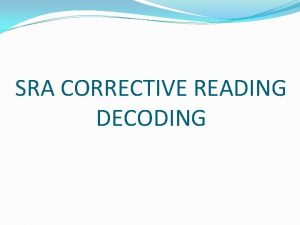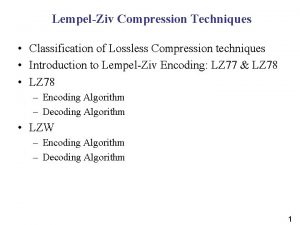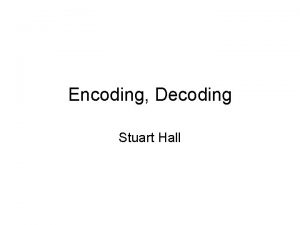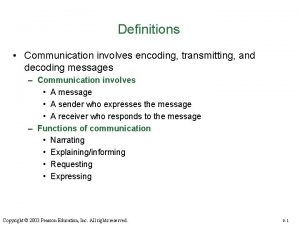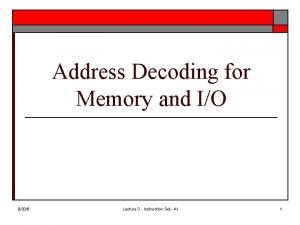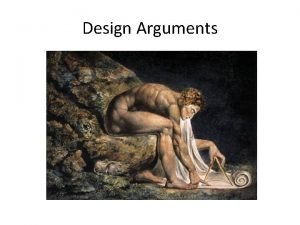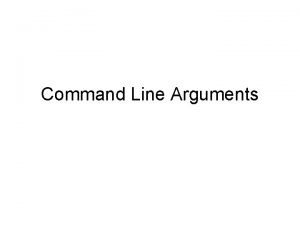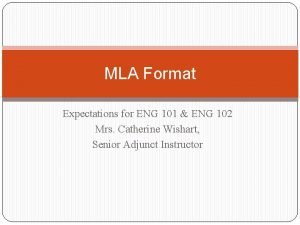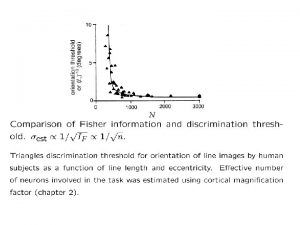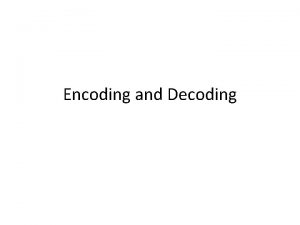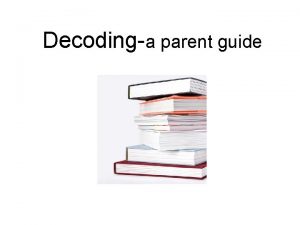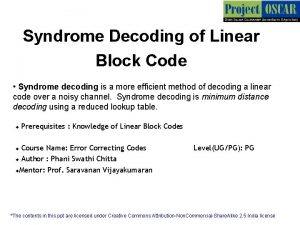Chapter 3 Decoding Visual Arguments ENG 102 Visual


















- Slides: 18

Chapter 3: Decoding Visual Arguments ENG 102

Visual Arguments • Can be an advertisement, a chart, a graph or table, a diagram, a Web page, a photograph, or a painting • Can take a position and offer evidence to support the position • Position and evidence are communicated through images rather than words

Thinking Critically about Visual Arguments • Goal is to understand the point that the creator of the visual is trying to make • Need to understand how the message is conveyed • Need to evaluate whether or not the methods used to persuade the audience are logical and fair ▫ Effective?

Visual Text versus Visual Argument • Visual Text – Presents information ▫ Does not take a stand • Visual Argument ▫ Takes a stand

Visual Text Apple

Visual Argument

Visual Argument

Reading Visual Arguments • Use Active Reading Strategies ▫ ▫ Previewing Careful Reading Highlighting Annotating • Evaluate ▫ The main idea or message ▫ The purpose ▫ The intended audience • Clues ▫ Text ▫ Images

Comprehension Clues • The individual images that appear • The relative distance (close together or far apart) between images • The relative size of the images • The relationship between images and background • The use of empty space • The use of color and shading ▫ Example: contrast between light and dark • If people are pictured, their activities, gestures, facial expressions, positions, body language, dress, and so on

Appeals to Convince the Audience • Logos – logic ▫ Layout ▫ Text ▫ Evidence • Pathos – emotions ▫ Images • Ethos ▫ Spokesperson ▫ Brandname


Identifying the Elements of a Visual Argument • Does the visual present information or take a stand? • What is the main idea of the visual? • What elements in the visual support the main idea? • If text is used, are the words necessary? • What purpose does the visual seem designed to achieve? • What kind of audience is the visual aimed at? • How does the visual appeal to logos, pathos, and/or ethos? • Is the visual effective? Is it likely to have the desired effect on its intended audience?

Highlighting and Annotating Visual Arguments • Focus your attention on the images ▫ Identify key images �Star, box, and/or circle them �Draw lines or arrows to connect related images ▫ Comment on the effectiveness of individual images in communicating the message of the whole �Can be comments or questions

Why plaid shirt? Everyman? Working man? Farmer? Main idea = GMOs are bad Pathos = Scared Expression “Patent pending” – Emphasizes invention – not natural

Responding Critically to Visual Arguments • Critical Response ▫ Analyzes the ideas in a text ▫ Expresses your reactions to them • Rely on your highlights and annotations ▫ Help you understand the ideas ▫ See how words and images work together to make a particular point

Questions for Responding to Visual Arguments • In what source did the visual appear? ▫ What is the target audience for this source? • For what kind of audience was the visual created? ▫ Hostile? Friendly? Neutral? • For what purpose was the visual created? • Who (or what organization) created the visual? ▫ What do you know about the background and goals of this person or group? • What issue is the visual addressing?

Questions for Responding to Visual Arguments Continued • What position does the visual take on this issue? ▫ How can you tell? ▫ Do you agree with this position? • Does the visual include words? ▫ If so, are they necessary? ▫ What points do they make? ▫ Does the visual need more—or different—written text? • Does the visual seem to be a refutation (an argument against a particular position)? • Is the visual effective? Attractive? Clear? Convincing?

Writing a Critical Response to a Visual Argument • • Identify the source of the visual Identify the purpose of the visual State your reaction to the visual Examine the elements of the visual one at a time ▫ Consider how effective each one is ▫ Consider how well the various elements work together to create a convincing visual argument • End with a concluding statement that summarizes your reaction
 Funksiyaning eng katta va eng kichik qiymatlarini topish
Funksiyaning eng katta va eng kichik qiymatlarini topish Eng 102 bilkent
Eng 102 bilkent Analyzing visual arguments
Analyzing visual arguments Visual argument pictures
Visual argument pictures Barometric trend station model
Barometric trend station model Encoding/decoding stuart hall
Encoding/decoding stuart hall Do coding
Do coding Dramqq
Dramqq Phonics pathway
Phonics pathway Decoding a flowers message sat answers
Decoding a flowers message sat answers Sra corrective reading placement test
Sra corrective reading placement test Decoding stylistics
Decoding stylistics Lzw decoding example
Lzw decoding example Huffman greedy algorithm
Huffman greedy algorithm Stuart hall encoding decoding
Stuart hall encoding decoding Encoding definition in communication
Encoding definition in communication Address decoding
Address decoding The sender of an integrated marketing communication
The sender of an integrated marketing communication Decoding the flu case study answers
Decoding the flu case study answers


